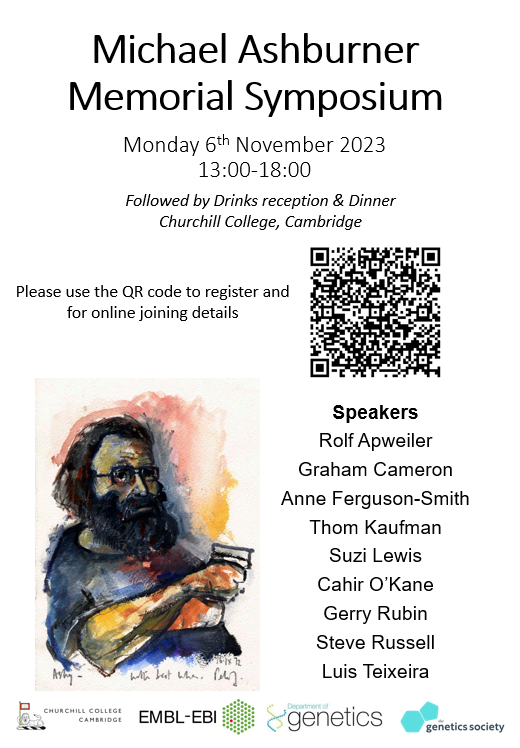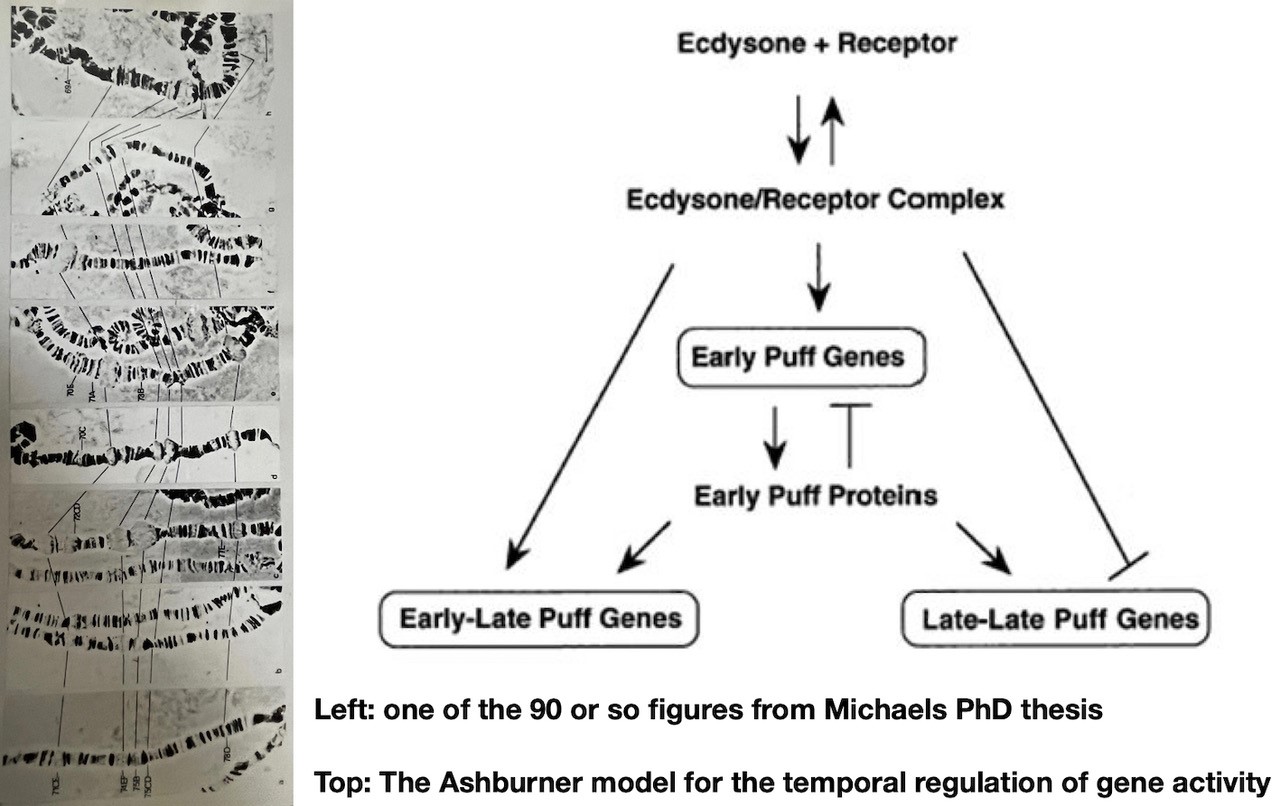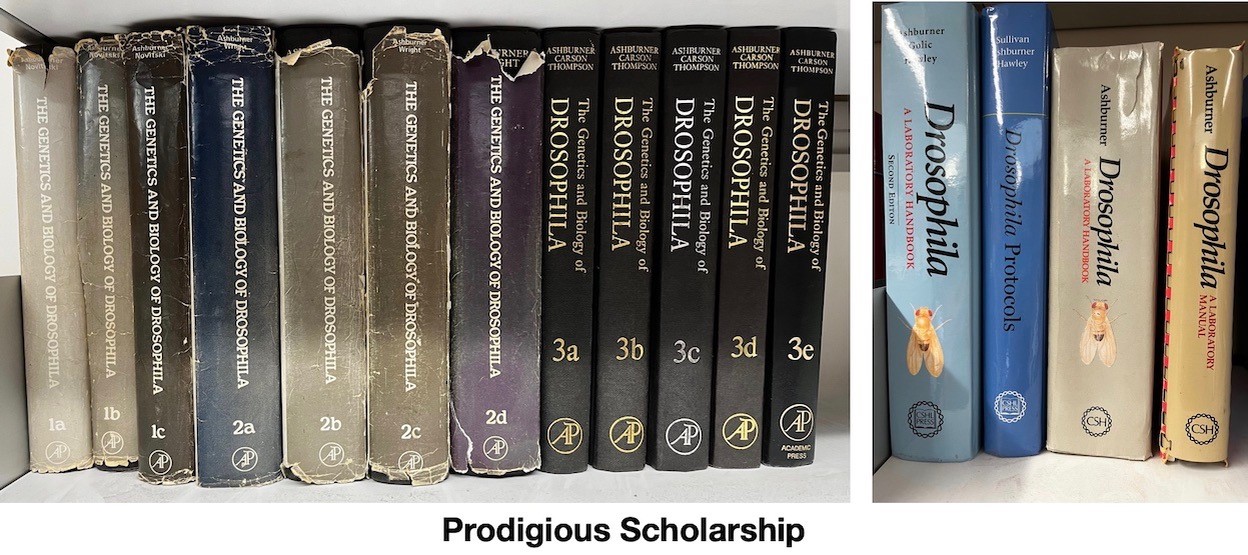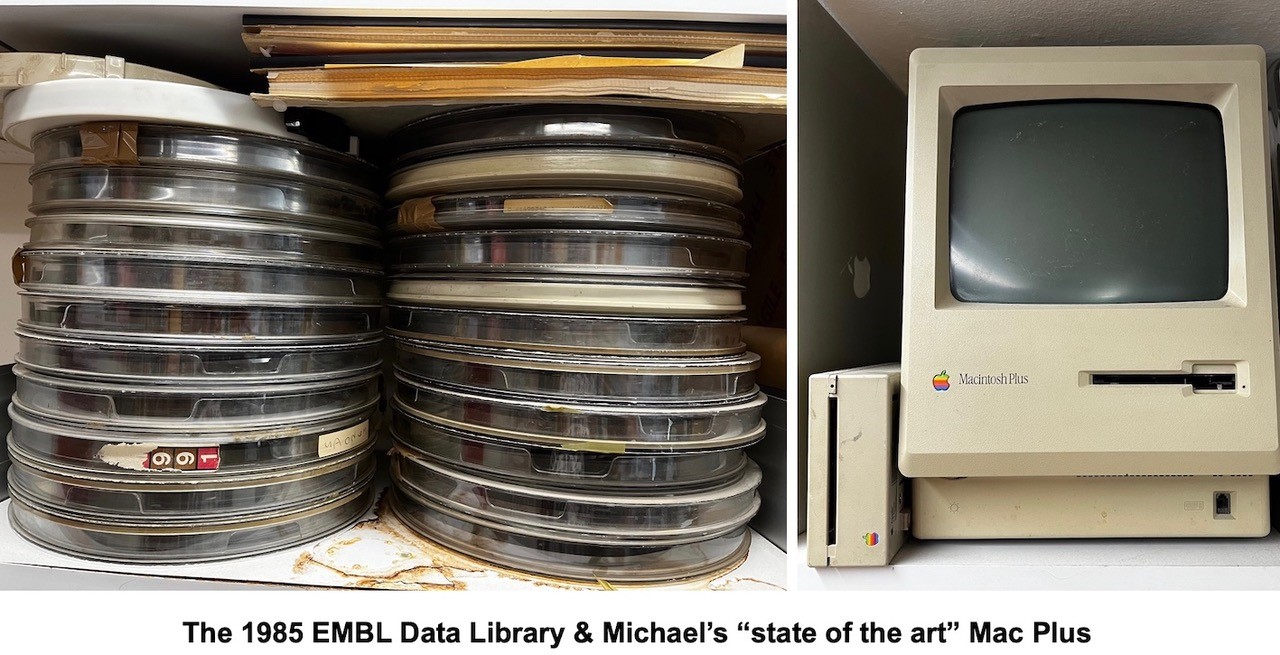Professor Michael Ashburner FRS
1942 - 2023
To celebrate Michael's memory and legacy, family, friends and colleagues attended a memorial event which was held on Monday 06 November 2023 at Churchill College, Cambridge.
There was an afternoon symposium reflecting on Michael's enormous contributions to science , followed by a drinks reception. Attendees were also invited to join for a College dinner afterwards.
A recording of the symposium is available on our YouTube channel here.
It is with great sadness we announce the death of Michael Ashburner, one of the Genetics Department’s most eminent scientists and a Fellow of Churchill College. Michael joined the Department in 1963 as a Part II Genetics student and stayed to carry out his PhD research under the supervision of Alan Henderson, while the Department was located on Milton Road. After receiving his PhD in 1968, he was appointed as an Assistant in Research in the Department, moving on to a lectureship and finally to a personal chair as Professor of Biology in 1991. Michael retired in 2011 and apart from a couple of sojourns - summer work in Naples after his degree to study octopus chemotactility (his first paper, DOI: 10.1242/jeb.43.3.553) and in CalTech after his PhD - he was at the heart of the Genetics Department for almost 50 years. He was elected to the Royal Society in 1990 and the American Association for the Advancement of Science in 1993. He received many distinguished awards during his career including the UK Genetics Society Medal, both the Gregor Mendel Medal and the George W Beadle Award from the Genetics Society of America, and the Benjamin Franklin Award from the Bioinformatics Society.
Michael’s contributions to science were enormous, spanning disciplines from Drosophila biology and genetics, through to bioinformatics and genome biology. His PhD work focused on characterising the temporal puffing patterns observed in fruit fly larval salivary gland chromosomes, which he continued to develop, culminating in the highly influential model for an ecdysone induced cascade of gene regulation. Described prior to the advent of DNA cloning, the “Ashburner Model” has stood the test of time as a paradigm for metazoan gene regulatory networks (DOI: 10.1101/SQB.1974.038.01.070).
His subsequent work identified heat shock proteins and, for many years, focused on the molecular genetics of the Alcohol dehydrogenase (Adh) region of the genome, providing important insights that set the stage for genome sequencing efforts in the fly (DOI: 10.1093/genetics/153.1.179). His adventures with the Drosophila genome project are pithily recalled in his short and highly entertaining book “Won For All: How The Drosophila Genome Was Sequenced”.
Michael’s energy was inexhaustible; his lab work was simply not enough. From 1976 to 1986 he coordinated and edited, with several notable colleagues, the comprehensive 12 volume collection on the Genetics and Biology of Drosophila. These were hugely influential works that captured virtually every aspect of the fly from genetics, through physiology, anatomy, natural history and evolution. In 1989 he published the massive “Drosophila A Laboratory Handbook” and its accompanying Laboratory Manual: there can be very few fly labs in the world that do not have copies of these encyclopaedic works and to this day they still serve as invaluable references to all things Drosophila.
Hand in hand with the traditional approaches to scientific information, Michael was becoming increasingly involved in the emerging field of bioinformatics. In 1982 he arranged for the EMBL Data Library to be hosted on University of Cambridge mainframe computers, setting in motion a sequence of events resulting in him co-leading a bid to EMBL to host the European Bioinformatics Institute in the UK, next door to the emerging Sanger Centre on what is now the Wellcome Genome Campus, Hinxton. Consequently, Michael was the first co-head of the EBI, a role shared with Graham Cameron, for several years.
Seeing the way the wind was blowing in terms of the deployment of computers in exploring questions in biology, Michael was instrumental in the founding and development of FlyBase (DOI: 10.1242/dev.120.7.2077), the online encyclopaedia of Drosophila genetics and biology, and led the literature curation group here in the Genetics Department for over 20 years. Through the development of FlyBase, Michael came to realise that there was a pressing need for a more structured language to describe biological function at a molecular, cellular and organismal level and the Gene Ontology project was born as a collaboration across model organism databases (DOI: 10.1038/75556). The Gene Ontology unifies the representation of gene and gene product attributes across species and is a foundation of much genome biology and functional genome annotation.
As is obvious from the above, Michael’s contributions to science have been monumental. What doesn’t come across from this rather dry listing of his achievements is his incredible humanity and generosity, and the endless support he gave to many, many scientists - especially those at the early stages of their careers. His lab was always full of long- or short-term visitors often doing their own thing but supported by Michael’s encyclopaedic knowledge, his boundless enthusiasm for science and his incisive intellect that quickly got to the heart of any problem. His undergraduate teaching in the Genetics Department was legendary; Gauloises in hand and ash on his jumper, he inspired students across the decades with his passion for genetics, conveyed so memorably and with such wit, and Academic Staff meetings were certainly more entertaining with his contribution! He was an inspiration to thousands of scientists across the globe and it will be a very long time before we see his like again. He is sadly missed by the Department, the fly community, the world of bioinformatics and of course his wife Francesca and children Rebecca, Geoffrey and Isabel. We can be grateful that his life and work left the world a much better place.
> PDF version available here.




